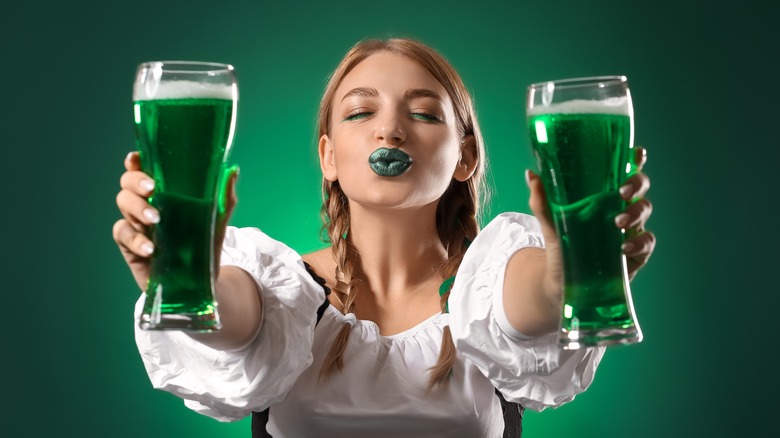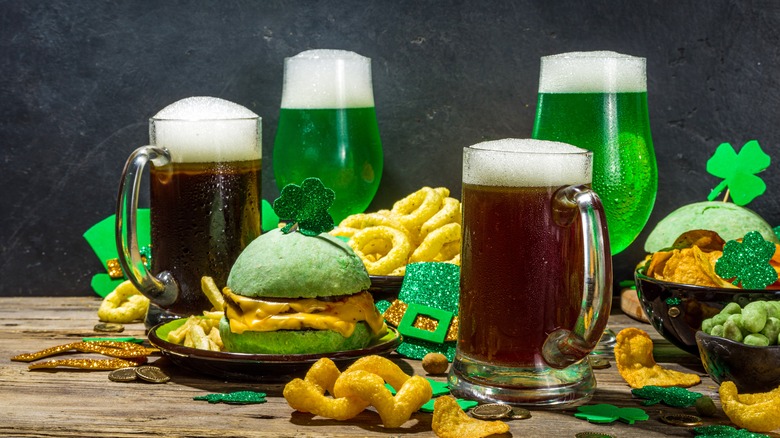The Strange Origins Of Green Beer
St. Patrick's Day has been celebrated for a very long time, but it wasn't until 1631 that it officially became a holiday in Ireland, where it was observed as a "religious feast day," History notes. Strangely enough, St. Patrick was honored even earlier in what is now the U.S., although not for his role in bringing Christianity to Ireland. Spanish colonists who hosted the original St. Patrick's parade in St. Augustine, Florida, in 1601 did so, per National Geographic, because he was the patron saint of maize.
St. Patrick-related festivities continued in America when it became a British colony. Britannica reports that parades in honor of Ireland's patron saint took place in Boston as early as 1737 and in New York by 1762. But the great migration of Irish to the U.S. between 1820 and 1930 helped promote more widespread holiday celebrations. According to the Library of Congress, about 4.5 million Irish citizens immigrated to the U.S. during this period. However, there was a notable difference in the nature of celebrations in the U.S. compared to Ireland. As Britannica explains, St. Patrick's Day celebrations in the U.S. were focused on Irish culture rather than religion.
As a consequence, Irish Americans were responsible for establishing many traditions that are now associated with St. Patrick's Day. Green beer, for example, is very much an American invention.
Did green beer come from a doctor or a bar?
According to Food & Wine, green beer likely originated at the Schnerer Club of Morrisania in the Bronx in 1914. But the drink's inventor, Dr. Thomas Curtin, didn't use green dye to color the beer. Per Irish Central, it was a single drop of an iron-based clothes-whitening bleach known as "wash blue." Apparently, such a minute quantity of the poisonous bleaching agent was not enough to harm the assembled revelers or even to slow the tide of festive drinking. Dr. Curtin must have been confident that would be the case. He was, after all, both a surgeon and a coroner.
Curtin is considered the inventor, but alternative origin stories exist. Vox reports evidence of a Spokane, Washington, bar serving green beer as early as 1910. The evidence comes from a newspaper account in the Spokane Press, which references a brew that "tastes like beer and looks like paint." Undeniably, green beer didn't become a popular St. Patrick's Day quaff in America until the '50s.
In addition to dying beer green on St. Patrick's Day, Americans also inaugurated the custom of dyeing entire rivers green to celebrate the holiday. Chicago famously has dyed its own Chicago River green for every St. Patrick's Day since 1962, per Smithsonian Magazine. However, the first city to do so was Savannah, Georgia, which colored its eponymous river green in 1961.

